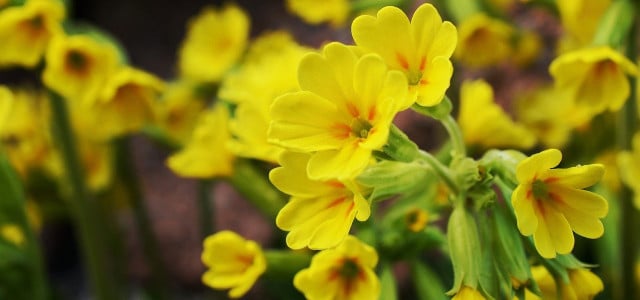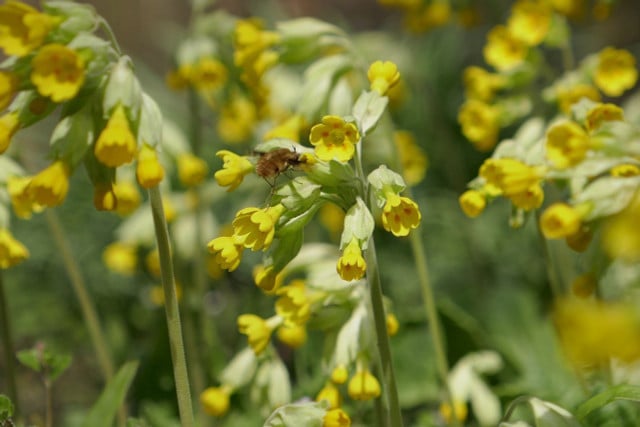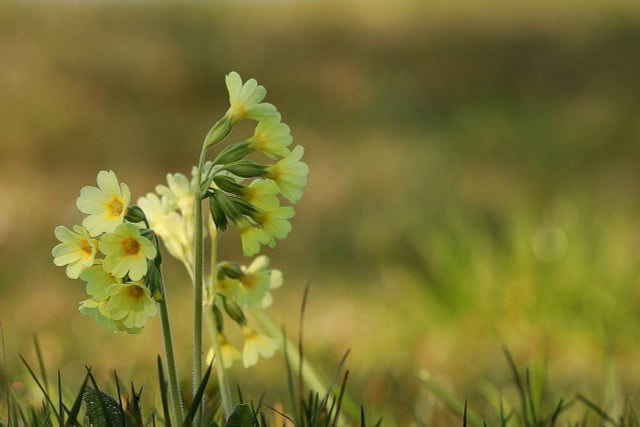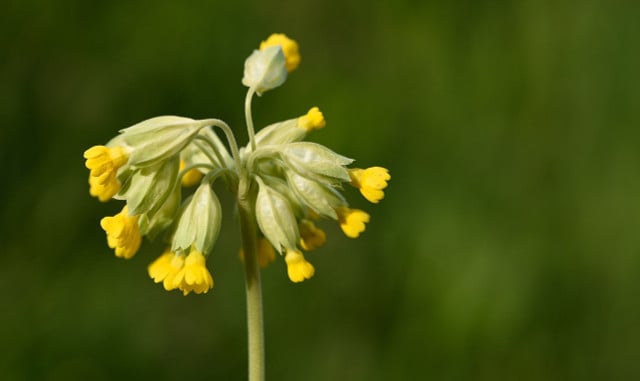
Cowslip is not only popular as an ornamental plant, it also enriches your herb bed as a medicinal plant. In this article we will show you how to properly grow and care for this native plant.
Cowslip belongs to the primrose family and grows preferentially on meadows and forest edges in Europe and Central Asia. The native wild perennial forms the first yellow flowers as early as March and is very popular with hobby gardeners as an early bloomer. But the primrose is not only beautiful to look at. In the Middle Ages, it was considered a proven remedy for gout and colds. Even today, you can still use the wildflower in many ways.
Contents
How to plant the Cowslip properly

You can buy cowslip either as seed or as a pre-cultivated seedling at a well-stocked garden supply store. The following tips will help you to grow cowslip in your garden:
- The right location: Plant the young primrose in a sunny spot in your garden. In hot regions, however, the wildflower also thrives well in partial shade.
- The right soil: Depending on the species, cowslip has different soil requirements. Cowslip grows best in sandy-loamy soil, such as that found in rock gardens. Cowslip is also known as wood primrose and prefers calcareous and moist soil with a high percentage of humus. It is best to ask the gardener what preferences your purchased primrose has.
- The right time: The ideal time to put young primroses in the ground is in the fall. The only important thing is that the soil is not yet frozen. If you want to sow primroses as seeds directly into the bed, you should do this in late summer. This will give the cold seedlings enough time to develop over the fall and winter.
Direct sowing of primroses: primroses are cold germinators, so they germinate in cold temperatures. Therefore, you can easily sow their seeds directly into the bed in the fall.
- Before sowing, thoroughly clear the soil of weeds and lift some compost under the soil.
- Now scatter the seeds in the soil at intervals of about ten centimeters.
- Cover the seeds only very lightly with some crumbly soil.
- Always keep the seeds slightly moist for the next few weeks.
Put cowslip in the ground as a seedling: You can place young plants that have been pre-potted at the gardener’s directly into the soil in the fall.
- Place the potted primrose together with its pot in a bucket of water. Only take the plant out again when no more air bubbles rise. This allows the root ball to soak up water.
- In the meantime, clear the soil at the site of weeds.
- Now dig a planting hole for the primrose that is twice as large as the root ball. If you are planting several primroses, you should leave a space of 25 centimeters between the seedlings.
- Mix the excavated soil with compost or horn shavings in a large bucket.
- Take the primrose out of its pot and place it in the planting hole. Now refill the hole with the excavated soil.
- Finally, water the primrose vigorously with water.
Attention: The primrose is a protected species. Therefore, you should never pick wildflowers growing in meadows. It is also forbidden to collect the seeds of the wild primrose. Therefore, it is better to buy seeds from a gardening store.
The right care for the cowslip

As a wild plant, the primrose is very easy to care for and will cause you little work. With the following care tips, you can enjoy the colorful early bloomers for a long time:
- Watering: The root ball of the primrose must never dry out completely. Therefore, you should water the plant regularly, especially during long dry spells and in the hot summer. It is best to water the primrose in the morning or evening, when direct sunlight is not yet too strong. However, water only when the top layer of soil has already dried. This way you can avoid waterlogging.
- Fertilize: If you have already enriched the soil with compost when planting, the primrose will not need any additional fertilizer later.
- Wintering: Wild primroses such as primrose and cowslip do not need special winter protection. Only in regions with very harsh winters should you protect the wild species from frost with a layer of autumn leaves. Hybrid plants from the specialized trade, on the other hand, are usually not winterproof. You should cover these primroses with sufficient foliage, straw and coniferous twigs before the first frost.
Propagation: Cowslip will self-seed. If you prefer to propagate the wildflower in a controlled manner, you can collect the ripe seed pods after flowering and directly resow the seed.
The effect and use of cowslip as a medicinal plant

Already in the Middle Ages, some species of cowslip were used as a medicinal plant for coughs or gout. Today, especially the primrose and the cowslip are used as herbal medicines in homeopathy and alternative medicine.
Especially the roots and the flowers of these primroses contain medicinally active ingredients:
Saponins: the so-called triterpene saponins ensure that the bronchial mucous membranes form larger quantities of bronchial secretions. This also liquefies stuck mucus in the bronchial tubes, making it easier to cough it up.
Flavonoids: The roots of the cowslip also contain flavonoids that can inhibit inflammation and relieve spasms.
Its expectorant and antispasmodic properties make cowslip an effective medicinal plant for colds and other respiratory diseases. The wildflower is used in the following areas:
- Cowslip in the kitchen: the flowers and leaves of the primrose and cowslip are edible. However, according to the Apotheken-Umschau, the saponins contained irritate the stomach lining, so sensitive people and pregnant women should better not use the wildflower in the kitchen. Otherwise, you can use cowslip flowers and leaves in small quantities raw in salads or as a soup ingredient.
- Ready-made medicines: In combination with thyme, the flowers of cowslip are often used in ready-made medicines to fight colds.
- Cowslip tea: According to Apotheken Umschau, a tea made from cowslip blossoms can combat the symptoms of inflamed and congested airways and make it easier to expectorate.
Here’s how to prepare cowslip tea:
- Pour a teaspoon of dried and finely chopped cowslip blossoms into a cup.
- Pour about 150 milliliters of hot water over the flowers.
- Let the tea steep for about five minutes and then strain the flowers through a sieve.
- You can drink three cups of cowslip tea per day.
Caution: Preparations with cowslip may cause stomach upset and nausea as side effects. Therefore, always consult your doctor before taking cowslip tea, for example. Pregnant women and nursing mothers should avoid products with primrose.

